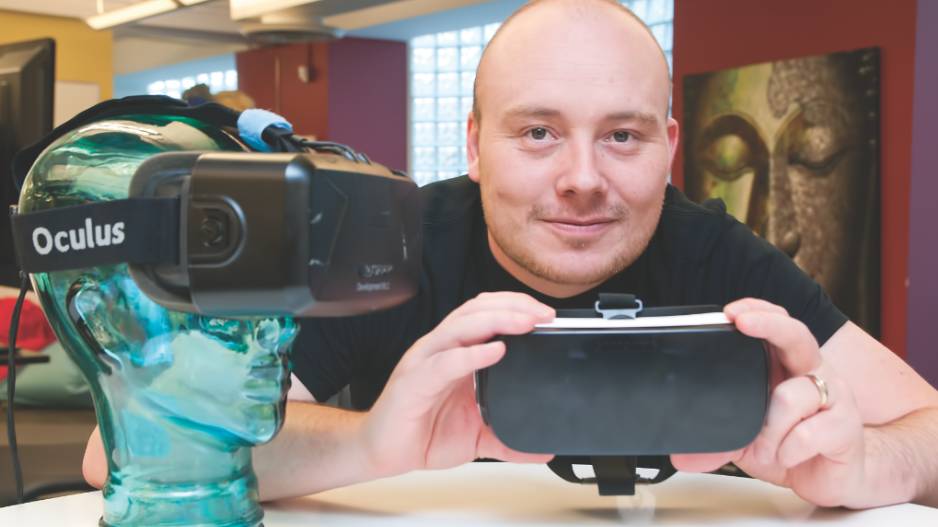Three years ago, the virtual reality (VR) whizzes at Immersive Media had just “a handful of competitors in this space,” according to Myles McGovern.
“There were almost 5,000 VR startups last year in North America,” the CEO of the Kelowna-based digital imaging company said. “You’re going to see quite a few failures.”
And with Facebook’s (Nasdaq:FB) Oculus Rift launching March 28 and the Sony PlayStation VR system making its debut later this year, even more players are entering the VR fray in 2016.
“Everybody used to think 2016 is the year because everyone wanted 2016 to be the year,” said Mack Flavelle, founder of Vancouver-based VR consultancy firm Hammer and Tusk. “But now that we’re in month three or four of 2016, everyone is like, ‘No, nope, no, no – next year.’”
Flavelle, who sold Hammer and Tusk in February to Vancouver-based venture studio Axiom Zen in an all-equity transaction, said VR isn’t good enough yet to break into the mainstream.
“There are lots of brands, there’s a ton of money, there’s billions of investment dollars, there’s great technology, there’s advertising that’s bubbling up. And this is all despite the fact everybody knows there are no consumers yet.”
Flavelle said the content that’s available won’t attract mainstream consumers who aren’t interested in “the Pong of video games.”
Hammer and Tusk’s deal with Axiom Zen also includes $1 million earmarked for growth at Flavelle’s firm, which is developing VR software and content.
But high prices on the hardware side of the business have been a sticking point for casual users.The PlayStation VR will cost US$300, the Oculus Rift is pegged at US$600 and the HTC Vive costs US$800. Deloitte Global predicted in a January report that VR would have its first US$1 billion year in sales in 2016, with US$700 million coming from hardware and the rest coming from content.
Despite that big figure, Deloitte stated that VR would remain a niche market throughout 2016 owing to the lack of content.
“It’s real anti-social,” report co-author Duncan Stewart, Deloitte’s director of research, told Business in Vancouver.
He doesn’t believe families will ever sit down together in a living room to put on VR headsets as part of a communal experience the way many people watch TV or movies together. That leaves it to hard-core fans – not casual fans – to support the industry.
But McGovern is confident Immersive Media won’t be included among those companies that struggle to find traction.
His company has been developing VR and augmented-reality content for more than two decades for clients like CBC’s Hockey Night in Canada, the New York Times and Google’s (Nasdaq:GOOG) Street View feature. And late last year Immersive Media was sold to Hollywood visual effects house Digital Domain in a deal valued at approximately $100 million.
McGovern said no one wants to be left behind when it comes to the next potential revolution in consumer technology. He added that it will take a convergence of killer content, the right technology and a sensible business model for VR to break into the mainstream.
So even if 2016 is not the breakout year for VR, Flavelle said both technology and content are quickly catching up to mainstream audiences. “I would say that when you went to Thanksgiving dinner in 2018 that you’d expect to talk to your uncle about the VR experience you had played because it’s as big as Angry Birds but far [better] for dinnertime conversation."




